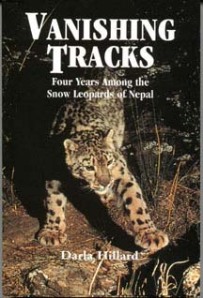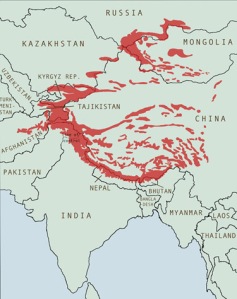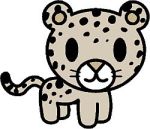Ladakh, northern India
Ladakh was the place I went on the Earthwatch Snow Leopard Project in the late 1990’s. It’s a beautiful place with spectacular high valleys, the soaring Himalayas in the background and wild running rivers. The capital Leh, is at almost 4000m altitude so you have to take it slowly the first few days after you fly in. And that’s hard to do, there’s so much to see in the way of ancient monasteries, vibrant villages and meeting the local people.
Ladakh is very different to the rest of India. With its extreme winter climate, high altitudes and Buddhist culture it’s easy to think you’re in Tibet rather than India.
The area now called Hemis National Park has been snow leopard range for a long time but like all these regions it’s been subject to population increases, deforestation and a decline in the prey species of snow leopards. During my project we spent hours each day searching for evidence of the cats’ presence and counting prey species like marmots and argali. We did eventually find evidence of snow leopard one day. There before us on a high path were scats and pug marks in the dust. Theyw ere near a rock outcrop, the sort of place the snow leopard loves to rub its chin, spray and leave scratch marks to communicate with any other cat that may be around.
We never did see a snow leopard though. I guess we didn’t really expect to, it was wonderful to know that they were still there. At the time the villagers we interviewed were generally hostile (understandably) to the animal and the tourists were oblivious that an animal called the snow leopard even existed.
Today much of that has changed, largely dues to the efforts of the Snow Leopard Conservancy (SLC), which has been working here for many years. To help the herder communities with extra income and raise living standards, the SLC has helped build Himalayan homestay projects in villages. Local people host tourists, many of them foreign nationals, in Ladakhi homes which gives them a chance to enjoy traditional hospitalit, food and culture. The SLC also gives technical and financial help to tourism activities if no snow leopard or cubs are killed by the villagers.
Making the livestock pens predator proof has also meant less losses of domestic stock to snow leopards and less retaliation killings. All these programs are helping people and snow leopards live side by side.
Read an interview with Rodney Jackson, founder of the Snow Leopard Conservancy.

Darla Hillard "Vanishing tracks". Story of Rodney Jackson and first ever radio collaring of a snow leopard.
“Vanishing tracks – four years among the snow leopards of Nepal” by Darla Hillard is about Rodney Jackson’s early work capturing and radio collaring snow leopards in Nepal.
Purchase the book from the SLC.









